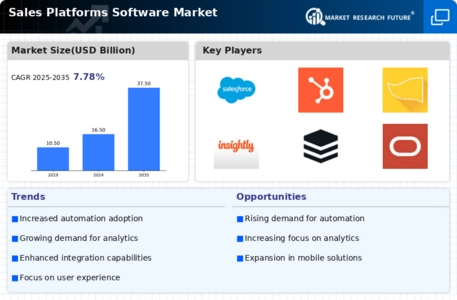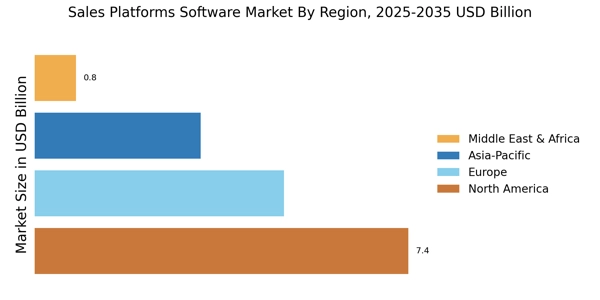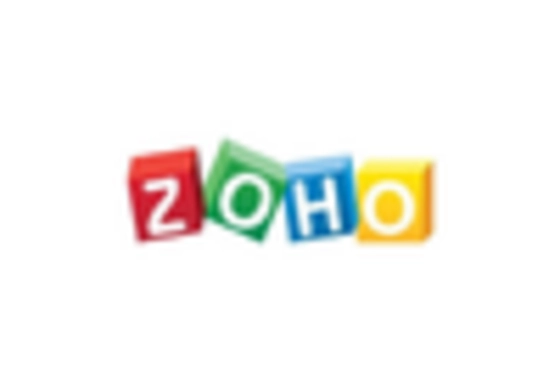The Sales Platforms Software Market is currently characterized by a dynamic competitive landscape, driven by rapid technological advancements and evolving customer expectations. Major players such as Salesforce (US), Microsoft (US), and HubSpot (US) are at the forefront, leveraging innovation and strategic partnerships to enhance their market positions. Salesforce (US) continues to focus on expanding its cloud-based solutions, while Microsoft (US) emphasizes integration with its broader suite of enterprise applications. HubSpot (US), on the other hand, is honing in on small to medium-sized enterprises, tailoring its offerings to meet the unique needs of this segment. Collectively, these strategies not only intensify competition but also foster a climate of continuous improvement and adaptation within the market.
In terms of business tactics, companies are increasingly localizing their operations and optimizing supply chains to enhance responsiveness to market demands. The Sales Platforms Software Market appears moderately fragmented, with a mix of established players and emerging startups. This structure allows for diverse offerings and competitive pricing, yet the influence of key players remains substantial, as they set benchmarks for innovation and customer service.
In August 2025, Salesforce (US) announced a strategic partnership with a leading AI firm to enhance its customer relationship management (CRM) capabilities. This collaboration aims to integrate advanced AI features into Salesforce's platform, enabling users to gain deeper insights into customer behavior and preferences. The strategic importance of this move lies in its potential to solidify Salesforce's position as a leader in AI-driven sales solutions, thereby attracting a broader customer base seeking cutting-edge technology.
In September 2025, Microsoft (US) unveiled a new suite of tools designed to streamline sales processes for its Dynamics 365 platform. This initiative focuses on enhancing user experience through improved automation and analytics. The significance of this development is underscored by the growing demand for efficiency in sales operations, positioning Microsoft to capture a larger share of the market by addressing the needs of modern sales teams.
In July 2025, HubSpot (US) launched a new feature aimed at enhancing customer engagement through personalized marketing automation. This feature allows businesses to tailor their marketing efforts based on real-time customer data. The strategic relevance of this launch is evident in its alignment with current trends towards personalization, which is increasingly becoming a critical factor in customer retention and satisfaction.
As of October 2025, the competitive trends within the Sales Platforms Software Market are heavily influenced by digitalization, sustainability, and the integration of artificial intelligence. Strategic alliances are becoming more prevalent, as companies recognize the value of collaboration in driving innovation. Looking ahead, competitive differentiation is likely to evolve, shifting from traditional price-based competition to a focus on technological innovation, customer-centric solutions, and supply chain reliability. This transition suggests that companies that prioritize these aspects will be better positioned to thrive in an increasingly competitive environment.


















Leave a Comment